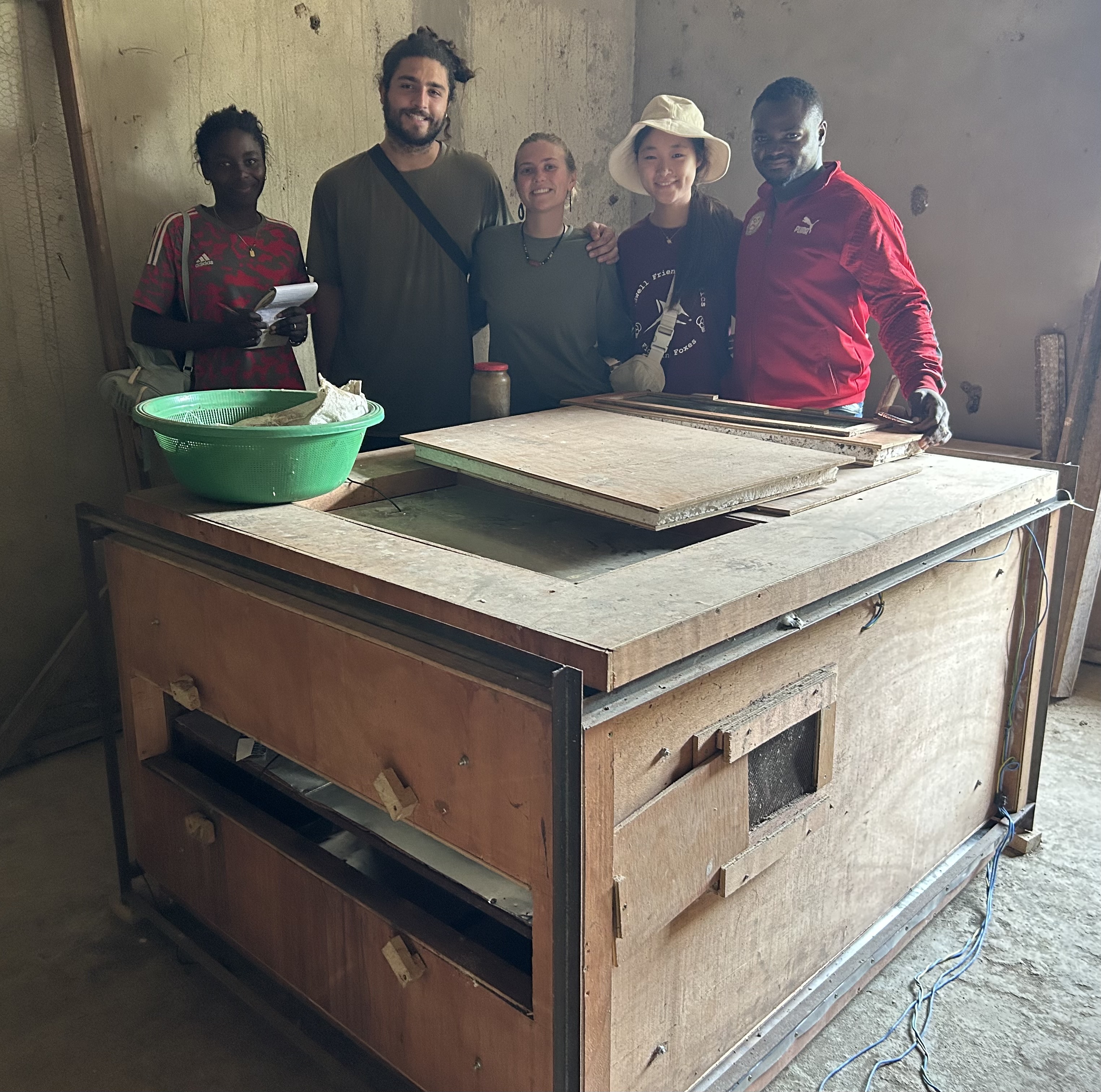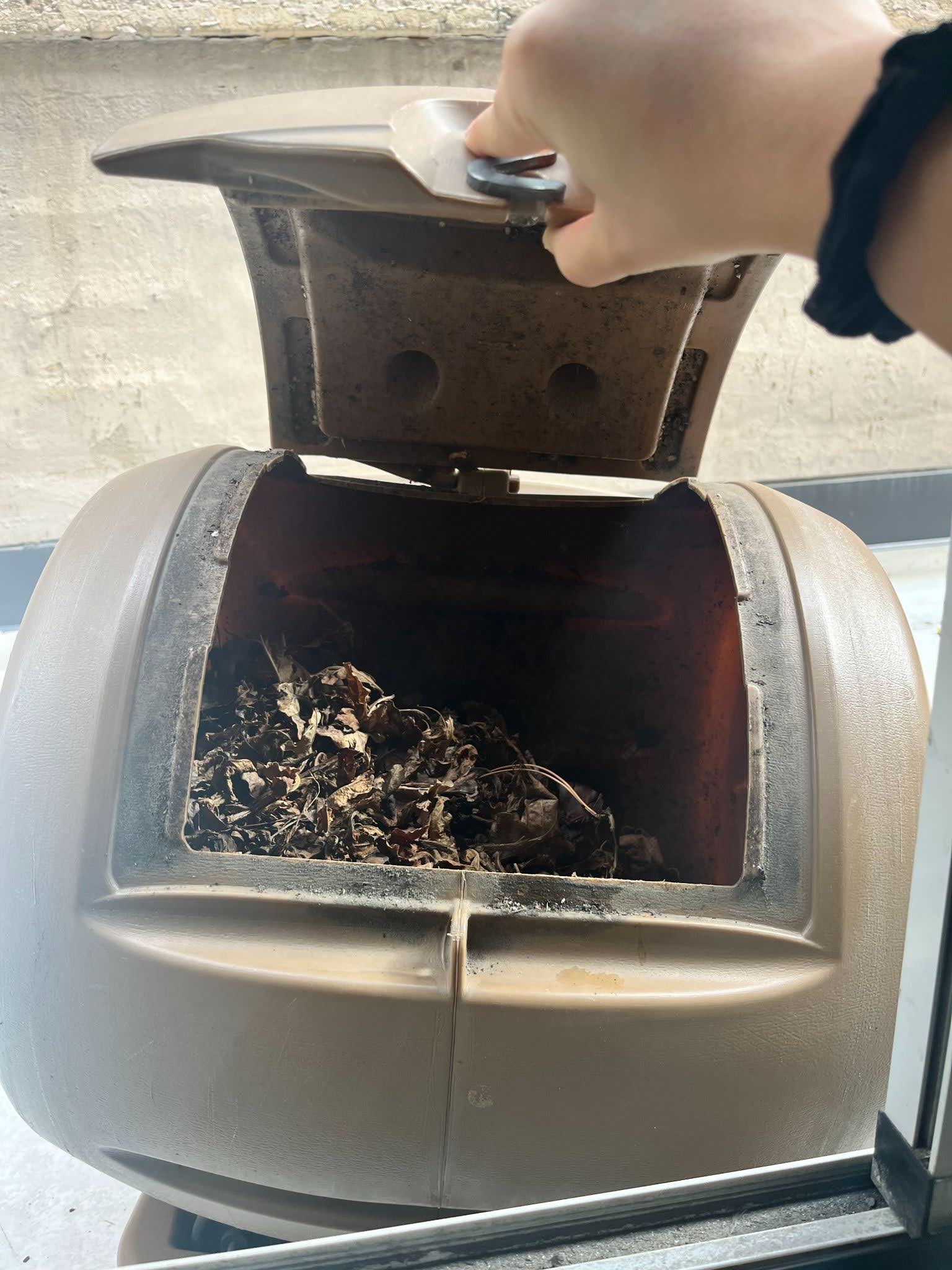Off-Grid Brooder for Cameroonian Poultry Farmers
in partnership with D-Lab at MIT
2023, Fall
A chicken brooder is a structure that keeps chicks warm—helping them "brood" in the first few week of life. Chicken brooders in the US are often electric powered, but in Cameroon electricity access is inconsistent meaning electric chicken brooders experience challenges providing the necessary heat to keep chicks alive .
In this project, we work with farmers in Cameroon to address this problem paying special attention to ease of use, consistency, and cost.
I have detailed the design process below.
Problem Statement:
Poultry farming is an essential part of Cameroon's meat industry, with more than 50% produced by small scale farmers. In the first two weeks of development, chicks must be kept at consistent, warm temperatures.
Current Solutions?
- Charcoal fires: heat up charcoal in a brooder house, requiring attention every 3 hours
- Electric brooders: use electricity to power a light bulb providing constant heat to chicks
--------------->
Limitations + Our Question
Electric brooders experience frequent outages and may be expensive. Charcoal fires emits toxins and CO2, and must be tended throughout the night. Could there be a more conveniant, reliable solution?
Final Idea: Wax Batteries with Vermicullite Insulatin
- Consistent, adaptable to the working environment of typical chicken brooder farms, cheap, safe
- Outer layer of insulation (vermicullite used here, can be exchanged), inner layer of beeswax
Initial Ideas
How can we build something that works with the farmer's current boxes? (Something that heats them up...)
- Solar Collector/Solar panel
- Compost heat byproduct
- Phase Changing Materials ("Wax" batteries)
Choosing the Battery: Battery Testing
- Wax is a phase changing material, meaning when it is heated up and then allowed to cool down, it releases a mass amount of heat
- A battery made of only wax releases a lot of heat in the first few hours and very little at the end...how can we ge a more consistent heat release?
- (Graph to left, wax battery in blue releases more heat than insulated wax battery, purple at the beginning and less atthe end...good start! How can we make purple even more horizontal?)
Trip and Findings
On the trip we adapted our battery set up to the materials available in Cameroon. On our trip we accomplished three main things
1) Adaptig our solution for use and testing there
2) Document the chicken brooder market and environmental conditions for future group work
3) Conduct interviews with local farmers about their methods of brooding chicks, and discussing problems and solutions they desire
------------
|
|
|
|
|
|
|
|
|
|
|
|
v
|
|
|
|
|
|
|
|
|
|
|
|
〈---------
|
|
|
|
|
|
|
|
|
|
|
|
|
v
|
|
|
|
|
|
|
|
|
|
|
|
|
|
|
|
|
|
|
|
|
|
|
|
|
|
〈-------------------------------
|
|
|
|
|
|
|
>
The three tests we ran to determine which battery configuration would reach the ideal temperature and get us the most constant heat release. Batteries looked like below with internal and external materials varying. We tested water and wax as a heat source, and water, foam, and vermiculite as the insulation.
















